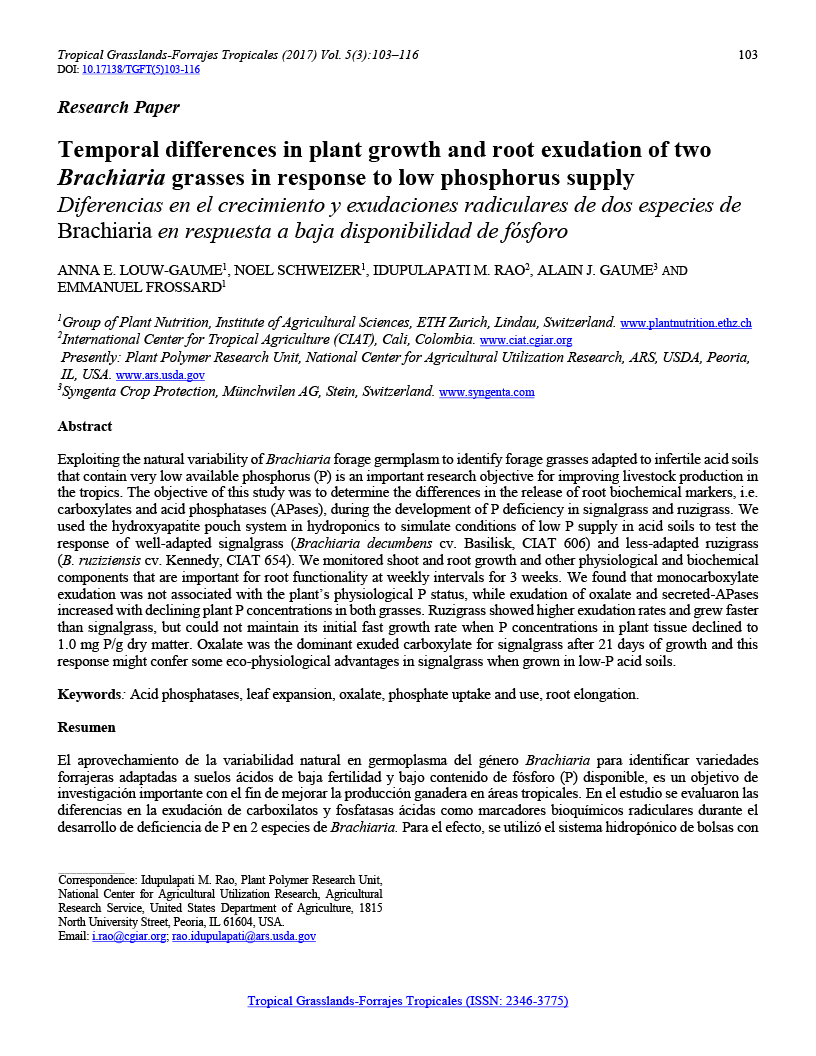Temporal differences in plant growth and root exudation of two <i>Brachiaria</i> grasses in response to low phosphorus supply
DOI:
https://doi.org/10.17138/tgft(5)103-116Abstract
Exploiting the natural variability of Brachiaria forage germplasm to identify forage grasses adapted to infertile acid soils that contain very low available phosphorus (P) is an important research objective for improving livestock production in the tropics. The objective of this study was to determine the differences in the release of root biochemical markers, i.e. carboxylates and acid phosphatases (APases), during the development of P deficiency in signalgrass and ruzigrass. We used the hydroxyapatite pouch system in hydroponics to simulate conditions of low P supply in acid soils to test the response of well-adapted signalgrass (Brachiaria decumbens cv. Basilisk, CIAT 606) and less-adapted ruzigrass (B. ruziziensis cv. Kennedy, CIAT 654). We monitored shoot and root growth and other physiological and biochemical components that are important for root functionality at weekly intervals for 3 weeks. We found that monocarboxylate exudation was not associated with the plant’s physiological P status, while exudation of oxalate and secreted-APases increased with declining plant P concentrations in both grasses. Ruzigrass showed higher exudation rates and grew faster than signalgrass, but could not maintain its initial fast growth rate when P concentrations in plant tissue declined to 1.0 mg P/g dry matter. Oxalate was the dominant exuded carboxylate for signalgrass after 21 days of growth and this response might confer some eco-physiological advantages in signalgrass when grown in low-P acid soils.




